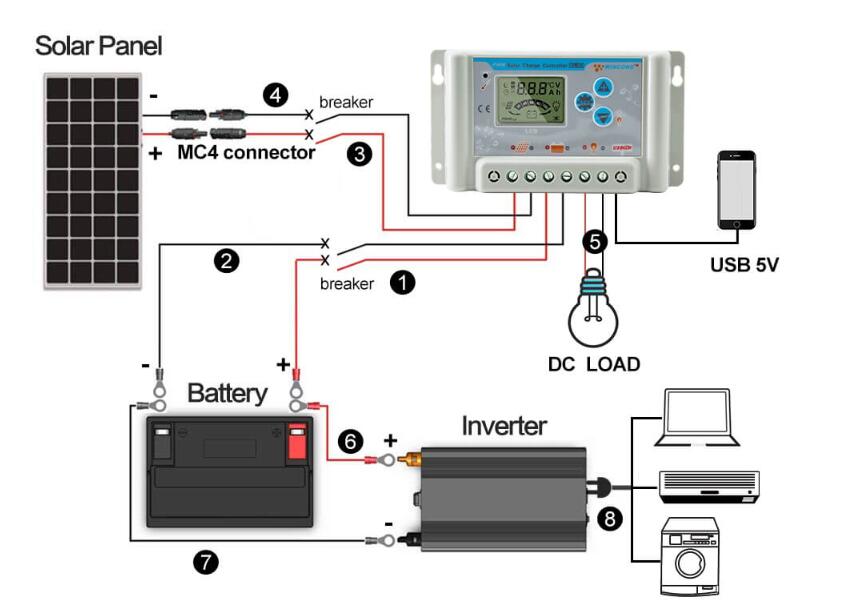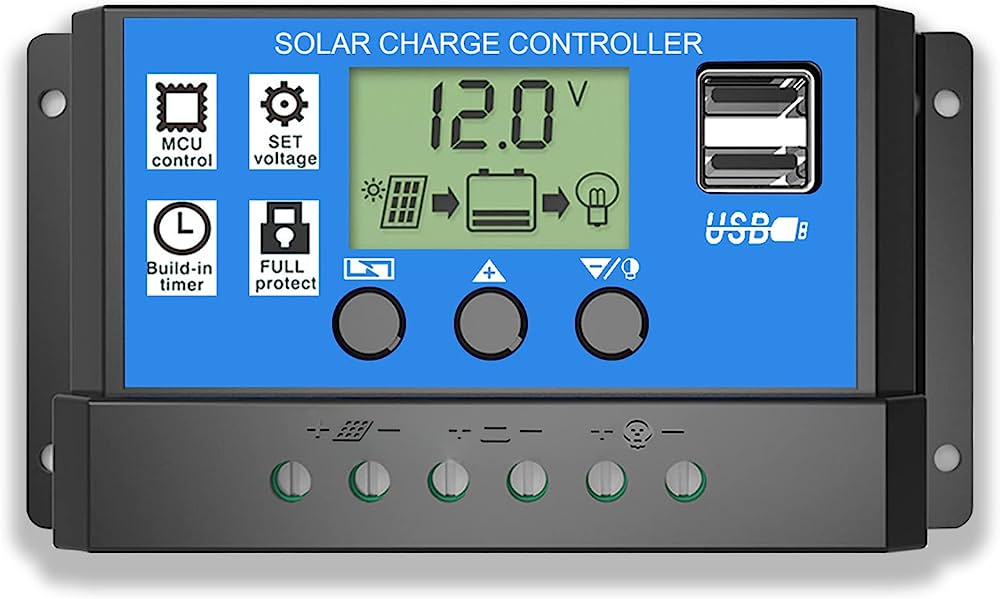As the world increasingly turns to renewable energy sources, solar power has emerged as a leading solution.
Harnessing the power of the sun requires effective management and control of the energy generated.
One crucial component that plays a pivotal role in solar power systems is the solar charge controller.
This comprehensive article aims to provide an in-depth understanding of solar charge controllers, exploring their functions, types, working principles, benefits, and future prospects.
What is a Solar Charge Controller?

A. Definition and Purpose
A solar charge controller, also known as a solar regulator, is an essential electronic device that regulates and controls the flow of electric current between solar panels and batteries in a solar power system.
Its primary function is to prevent overcharging and deep discharging of batteries, ensuring their longevity and optimal performance.
B. Importance in Solar Power Systems
Solar charge controllers serve several critical purposes in solar power systems:
1. Battery Protection: They safeguard batteries by preventing overcharging and deep discharging, extending their lifespan, and optimizing their performance.
2. Energy Efficiency: Solar charge controllers maximize the efficiency of energy utilization by ensuring that the power generated by solar panels is effectively delivered to the batteries.
3. System Monitoring: They provide valuable information and data on the performance and status of the solar power system, allowing users to monitor and troubleshoot any issues effectively.
Types of Solar Charge Controllers

A. PWM (Pulse-Width Modulation) Charge Controllers
1. Working Principle: PWM charge controllers regulate the flow of energy by rapidly switching the connection between the solar panels and batteries. This technique effectively controls the voltage and current supplied to the batteries.
2. Features and Benefits: PWM charge controllers are cost-effective, simple to operate, and suitable for small-scale solar power systems. They provide basic charging capabilities and work well with batteries of lower voltage ratings.
B. MPPT (Maximum Power Point Tracking) Charge Controllers
1. Working Principle: MPPT charge controllers employ advanced algorithms to track and extract the maximum available power from solar panels.
They dynamically adjust the voltage and current to match the optimal operating point of the panels.
2. Features and Benefits: MPPT charge controllers are highly efficient, especially in situations where solar panels operate at varying temperatures and light conditions.
They maximize the energy harvest from the panels, making them ideal for larger-scale solar installations.
Working Principles of Solar Charge Controllers

A. PWM Charge Controller Operation
1. Voltage Regulation: PWM charge controllers maintain a steady voltage output to the batteries, ensuring they are not overcharged.
2. Charge Stage Control: They employ a three-stage charging process – bulk, absorption, and float – to optimize the battery charging and maintain their health.
3. Battery Protection Mechanisms: PWM charge controllers implement various protective measures, such as overcharge protection, short-circuit protection, and reverse current protection.
B. MPPT Charge Controller Operation
1. Maximum Power Point Tracking: MPPT charge controllers constantly track the maximum power point of the solar panels by adjusting the voltage and current to match the optimal operating conditions.
2. Boost Conversion Efficiency: They convert the higher voltage output from the panels to a lower voltage suitable for charging the batteries, minimizing energy losses in the conversion process.
3. Battery Charging Optimization: MPPT charge controllers optimize the charging process based on battery characteristics, temperature, and solar panel conditions, ensuring efficient and effective battery charging.
IV. Benefits of Solar Charge Controllers
A. Battery Protection and Longevity
1. Overcharge Prevention: Solar charge controllers prevent batteries from being overcharged, which can damage their capacity and shorten their lifespan.
2. Deep Discharge Prevention: They protect batteries from deep discharging, which can lead to irreversible damage and reduce their overall performance.
B. Energy Efficiency and Harvest Maximization
1. Maximum Power Extraction: MPPT charge controllers maximize the energy harvest by dynamically adjusting the voltage and current to match the optimal operating point of the solar panels.
2. Adaptability to Varying Conditions: Both PWM and MPPT charge controllers adapt to changing environmental conditions, such as temperature and light intensity, ensuring efficient energy conversion.
C. System Monitoring and Protection
1. Real-time Data and Monitoring: Solar charge controllers provide valuable information on solar panel performance, battery status, and overall system health, allowing users to monitor and troubleshoot any issues effectively.
2. Protection Against Faults: They incorporate various protective features, such as short-circuit protection, overvoltage protection, and reverse polarity protection, safeguarding the system components.
Factors to Consider when Selecting a Solar Charge Controller

A. System Size and Voltage Compatibility
1. Determine the power requirements of the solar power system to select a charge controller capable of handling the expected load.
2. Consider the compatibility of the charge controller with the system voltage (12V, 24V, or 48V) and ensure it aligns with the solar panel and battery specifications.
B. Panel and Battery Type
1. Check the compatibility of the charge controller with the type and specifications of the solar panels, such as their maximum voltage and current ratings.
2. Consider the battery type (lead-acid, lithium-ion, etc.) and select a charge controller that supports the specific battery chemistry and charging requirements.
C. Climate and Environmental Considerations
1. Consider the ambient temperature range and ensure the charge controller can operate effectively under those conditions.
2. Account for any environmental factors that may affect the solar power system’s performance, such as dust, humidity, and potential shading issues.
D. Load and Power Consumption
1. Determine the expected load requirements and select a charge controller with sufficient capacity to handle the load and deliver the necessary power.
2. Consider any additional power-consuming components, such as inverters or DC-DC converters, and ensure the charge controller can support the overall power demand.
E. MPPT vs. PWM: Choosing the Right Technology
1. Evaluate the specific requirements and characteristics of the solar power system.
2. For smaller systems with lower voltage requirements and fixed operating conditions, a PWM charge controller may be suitable. However, for larger systems with varying conditions and higher efficiency demands, an MPPT charge controller is recommended.
Emerging Trends and Future Prospects

A. Integration of Smart and IoT Features
1. The incorporation of smart and IoT capabilities allows for remote monitoring, control, and optimization of solar power systems.
2. Advanced features like wireless connectivity, data logging, and cloud-based analytics enhance system management and performance.
B. Enhanced Connectivity and Remote Monitoring
1. Wireless communication technologies enable seamless connectivity between solar charge controllers, inverters, and monitoring systems, providing real-time data and control options.
2. Remote monitoring and diagnostics allow for quick identification and resolution of issues, minimizing system downtime.
C. Lithium Battery Compatibility and Management
1. With the increasing popularity of lithium-ion batteries in solar power systems, charge controllers are being designed to cater to their specific charging requirements and protection mechanisms.
2. Enhanced battery management features optimize the performance, longevity, and safety of lithium-ion batteries.
D. Advancements in MPPT Technology
1. Ongoing research and development in MPPT technology aim to further improve efficiency, response time, and overall performance.
2. Integration of advanced algorithms and power electronics enhances the ability to track and extract maximum power from solar panels.
E. Expansion into Off-Grid and Portable Applications
1. Solar charge controllers are increasingly being utilized in off-grid and portable solar power systems, such as RVs, boats, and outdoor activities, enabling clean and independent power sources.
2. Compact and portable charge controller options provide flexibility and convenience for users on the move.
Conclusion
Solar charge controllers are critical components in solar power systems, ensuring efficient energy management, protecting batteries, and maximizing energy harvest.
With their ability to prevent overcharging and deep discharging, solar charge controllers play a vital role in extending battery lifespan and optimizing system performance.
The choice between PWM and MPPT charge controllers depends on the specific requirements and characteristics of the solar power system.
As technology advances, solar charge controllers are evolving to include smart features, enhanced connectivity, and improved compatibility with lithium-ion batteries.
These developments enable remote monitoring, system optimization, and efficient management of solar power systems.
Additionally, advancements in MPPT technology continue to enhance energy conversion efficiency and maximize power extraction from solar panels.
Solar charge controllers are poised to play a significant role in the future of renewable energy.
With the expanding use of solar power in both grid-tied and off-grid applications, solar charge controllers will continue to evolve, providing efficient and reliable energy management solutions for a sustainable future.
